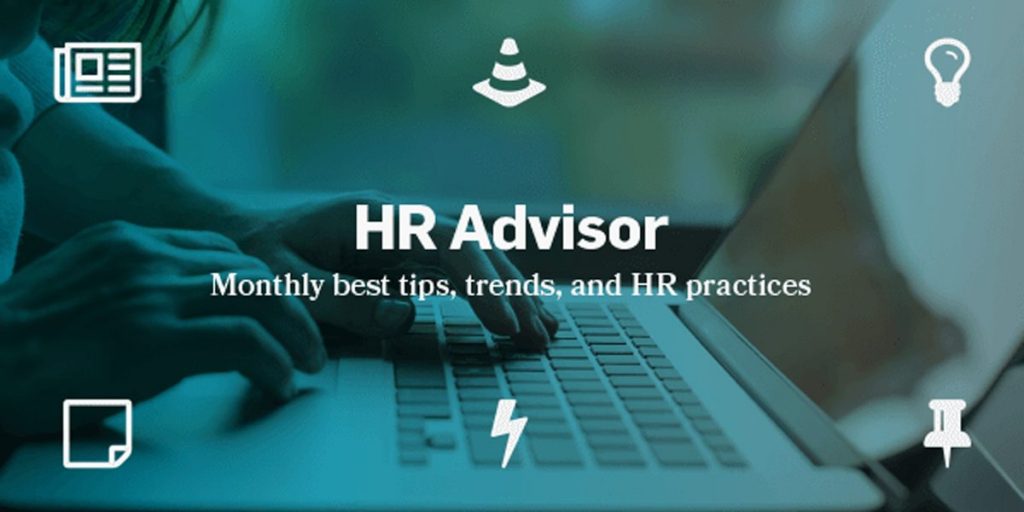Thank you for reading the HR Advisor Newsletter. In this month’s edition, we explain how to increase diversity in your recruiting and hiring process, how to conduct a termination meeting, and when you are required to pay for an unauthorized break.
How to Increase Diversity in Your Recruiting and Hiring Process
The recruiting and hiring process is supposed to select the best candidates while deterring unqualified job seekers from applying or advancing. All too often, however, the process creates obstacles or disadvantages for qualified candidates due to their membership in a protected class or minority group. Even a well-meaning process be discriminatory. Below are some actions you can take to eliminate discriminatory practices and increase diversity.
Reduce barriers. Consider your recruiting and hiring process from a candidate’s perspective, specifically from an under-represented class member’s perspective. Would a transgender person have a fair chance in the hiring process? What about someone with a disability or someone whose first language isn’t English? What obstacles might these people face when applying and going through the resume review, interview, and job offer stages? Are there difficulties some people would face that others would not? If so, do what you can to reduce or remove unnecessary barriers to entry.
Address biases. Consider what biases your company may have when screening candidates for employment. What about while interviewing? What unconscious biases might be affecting who gets interviewed or receives a job offer? Are individuals from some groups assumed to be coachable, but individuals from other groups assumed not to be? If you’re not sure how to assess your biases, check out the articles on bias linked below. You can also learn how to recognize interview biases by listening to the latest 2-Minute HR on the HR Support Center.
Post ads strategically. We tend to network with people who are like us, so social networks and employee referral programs can easily become homogeneous and hamper diversity efforts. Fortunately, there are lot of job boards designed to help individuals from minority and underrepresented groups find work. Try posting in these places.
Focus interviews on obtaining factual, job-related information. This is especially important when taking notes. Avoid documenting “gut feelings,” personal impressions, or narratives. Stick to job-related facts. Doing this will help to prevent personal bias from seeping into the interview.
Challenge hiring decisions. Challenge your managers and their hiring decisions, pushing them to further define what the “best” candidate would look like, both before and after the interview. When doing so, encourage and remind them to focus on capability—who is best qualified for the position. It’s important that candidates meet your expectations, but it’s also important that those expectations are legitimately job-related. For example, requiring clear verbal communications skills might be necessary for a customer-facing position, but it could be discriminatory if it prevented someone with a thick accent or anxiety about public speaking from being offered a position they’re perfectly qualified for.
Seek culture contributions. Look for candidates who can add or contribute to your company’s culture, as opposed to those that “fit” within it. Too often, when employers and managers hire for culture fit, they’re left with little diversity in the workplace.
When companies hire for fit, they end up cloning the same skills and experience repeatedly. The very nature of doing this means a company is favoring similarity and weeding out diversity. Instead, examine your company culture to determine what’s missing, and hire people who can enrich it, who will contribute positively to your culture.
Create an inclusive workplace. An inclusive workplace is one where differences among employees’ thoughts, opinions, and suggestions are valued—especially when they deviate from the norm. It’s also an environment where employees feel safe to be themselves and share information without fear of retaliation. When assessing your workplace for whether you offer an inclusive experience, consider how new ideas are responded to during meetings. Are they welcomed and valued, or are they quickly stifled because they aren’t in line with how things are normally done? Ask employees whether they feel the workplace is inclusive and about any experiences they’ve had, positive or negative.
These recommendations work best when you incorporate them into your recruiting and hiring policies and practices. They won’t be effective if they are just done once. Keep hiring managers and others involved in recruitment and hiring trained on your policies, emphasize the importance of a diverse workplace, and continually assess the process to ensure that everyone is following it.
Learn More
Unconscious Bias in the Workplace – April 2016
Interview Bias Impacting Hiring Decisions – December 2011
 HR Tip of the Month
HR Tip of the Month
Last month we talked about the importance of having documentation of poor performance or behavioral issues prior to termination. But what best practices should you keep in mind when you’ve got the needed paperwork and you’re ready to terminate? Running a smooth termination meeting may be more art than science, but there are some things you can do to make these conversations less painful for everyone involved. Here are a few:
- Hold the meeting in a private location.
- Have the meeting at a time of day when the terminated employee can make a graceful exit (e.g., during the lunch hour or the very end of the day).
- Have a script or at least an outline of the points you want to cover—and deviate from it as little as possible.
- Choose your words carefully—the terminated employee is likely to remember them (a script should help with this).
- Don’t exaggerate the problems that led to termination.
- Don’t downplay the problems that led to termination—giving a weak reason like “poor fit” will often lead employees to make up their own illegal reason for the termination.
- After the meeting, take notes about what was said by whom, should what happened during the meeting ever come into question.
 Did You Know?
Did You Know?
The Department of Labor considers any break under 20 minutes to be for the benefit of the employer, and therefore those breaks must be paid. However, unauthorized extensions of authorized breaks do not need to be counted as hours worked if the employer has expressly and unambiguously communicated to employees that authorized breaks may only last for a specific length of time, that any extension of the break is contrary to the employer’s rules, and any extension of the break will be punished.
Your recourse when employees take unauthorized breaks under 20 minutes is discipline, not reduction of pay. Employees who take longer breaks than authorized can have their pay reduced for the extra time, but discipline is still a good idea to prevent it from becoming a habit that ultimately cuts into productivity.
Anchor Payroll
350 Clark Drive – Suite 310
Mt Olive, NJ 07828
Additional Contacts
Phone: 800-660-7089
Email: sales@anchorpays.com



